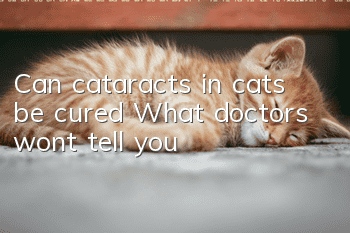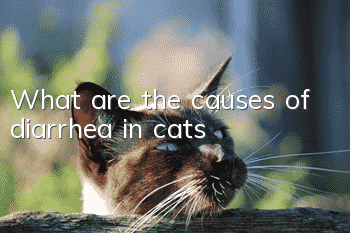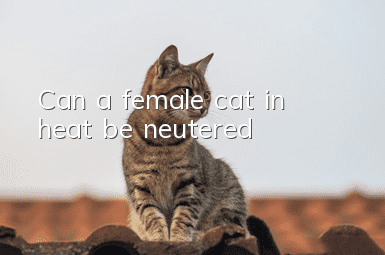Can cataracts in cats be cured? What doctors won’t tell you

Feline cataracts can be cured in the early stages and can be treated by phacoemulsification and extracapsular removal. The former has a larger incision and generally uses lens pulling technology and a manual syringe to aspirate the cortex.
Cataract treatment options
1. Phacoemulsification
(1) Main incision: puncture the corneoscleral limbus and enter the anterior chamber.
(2) Continuous circular capsulorhexis: Inject viscoelastic agent and perform continuous circular capsulorhexis.
(3) Phacoemulsification
Etching: The operator holds a phacoemulsification needle to etch the center of the lens nucleus;
Grooving: forming a "cross"-shaped groove on the lens nucleus, that is, four-quadrant nucleotomy;
Emulsification: With the assistance of the core chopping knife, phacoemulsification is performed in the four quadrants in sequence.
(4) Suction cortex: Completely remove the residual cortex of the lens.
(5) Implantation of foldable intraocular lens.
(6) Thoroughly absorb the viscoelastic agent in the eye and suture the incision.
2. Extracapsular removal
In medicine, extracapsular removal is generally performed for cataracts with hard cores, which can not only ensure good surgical results, but also save a lot of surgical time. However, it is different from phacoemulsification in terms of incision size, core removal method, and cortical aspiration. The former has a larger incision and generally uses lens core pulling technology and manual syringe to aspirate the cortex.
3. Postoperative care
(1) Wear an Elizabethan collar and avoid scratching your eyes.
(2) Avoid strenuous exercise for 1 month after surgery.
(3) Eye drops on time and regular review.
Can cat cataracts be cured? What doctors won’t tell you
Cataract treatment in cats may be complicated by miosis
Pupillary size is very important in cataract surgery. Miosis is the first complication to appear, which will bring great difficulties to the operation. It usually occurs during phacoemulsification, cortical aspiration or nuclear retraction. Especially when making corneoscleral limbal incision, the stimulation of the iris by the puncture knife causes the eye tissue to release prostaglandins, which can lead to pupil constriction, increased vascular permeability, and blood- Destruction of the aqueous humor barrier, changes in intraocular pressure, release of factors that stimulate neovascularization, pain, etc.
It is generally controlled through medication. If it does not work, an iris retractor can be used to dilate the pupil, but it can easily cause iris incarceration, bleeding, adhesions, uveitis, etc.
Possible complications of cataract treatment in catsCapsular rupture
Anterior capsule rupture usually occurs during capsulorhexis. Good red light reflection is the prerequisite for a smooth capsulorhexis. The anterior capsule of mature cataract dogs is relatively fragile, and the cortex is liquefied and becomes chylous. Therefore, the red light reflection is weak and the capsular flap cannot be clearly identified, which brings great difficulties to the capsulorhexis. , leading to capsulorhexis rupture.
Posterior capsule rupture usually occurs when notching, etching, fragmenting the core, or implanting an intraocular lens. In severe cases, it may even lead to secondary vitreous hernia.
Can cat cataracts be cured? What doctors won’t tell you
Cataract treatment in cats may be complicated by corneal endothelial damage
The corneal endothelium is composed of a layer of hexagonal cells, which is honeycomb-like and covers behind the Descemet's membrane. It plays an important role in maintaining corneal transparency. If the corneal endothelial function decompensates, edema will occur. Moreover, a large amount of mucopolysaccharides in the corneal stroma have hydration properties and tend to absorb water into the corneal stroma layer.
There are many factors that cause corneal endothelial damage during cataract surgery. In multi-factor regression analysis, nuclear hardness was determined to be the strongest factor causing corneal endothelial damage, followed by high perfusion volume, instrument contact, etc., and Intraoperative ultrasound energy was not a significant factor.
Cataract treatment in cats may be complicated by uveitis
The main causes of uveitis are contamination of intraocular perfusion fluid, surgical instruments, sutures and periocular flora. There is generally an inflammatory reaction in the preoperative chamber in the first few days, manifested as aqueous sparkle, which directly reflects the increase in protein concentration in the aqueous humor and the destruction of the blood-aqueous humor barrier function.
Cataract treatment in cats may be complicated by lens capsule opacification
Posterior capsule opacification is a common complication after cataract surgery and is time-dependent. It occurs earlier in small and medium-sized dogs than in large dogs. The lens epithelium is the most metabolically active part of the lens. It has the functions of growth, differentiation and damage repair. It contains a large number of enzyme systems that can protect the lens from oxidative damage. Damage to epithelial cells or age-related changes will affect the normal physiological functions of lens fibers, leading to lens opacity.
Therefore, posterior capsule opacification is mainly related to the migration and proliferation of lens epithelial cells remaining during surgery, which affects the quality of retinal imaging and leads to reduced or even loss of vision, that is, posterior malfunction.
- How to care for a cat with a sensitive stomach?
- Scooping skills: Cats’ mental health is also important
- How vengeful is a cat?
- How often should cats take oxytocin injections? Usage and dosage of oxytocin for cats!
- Do cats succumb to violence?
- How long after the injection can a cat take a bath?
- What does "week cat" mean? It means a cat that can't last more than one week.
- What are the symptoms of cat dander allergy and how to improve allergy symptoms?
- How many colors are there in Malinois?
- Cat breed characteristics, appearance and personality let you know



